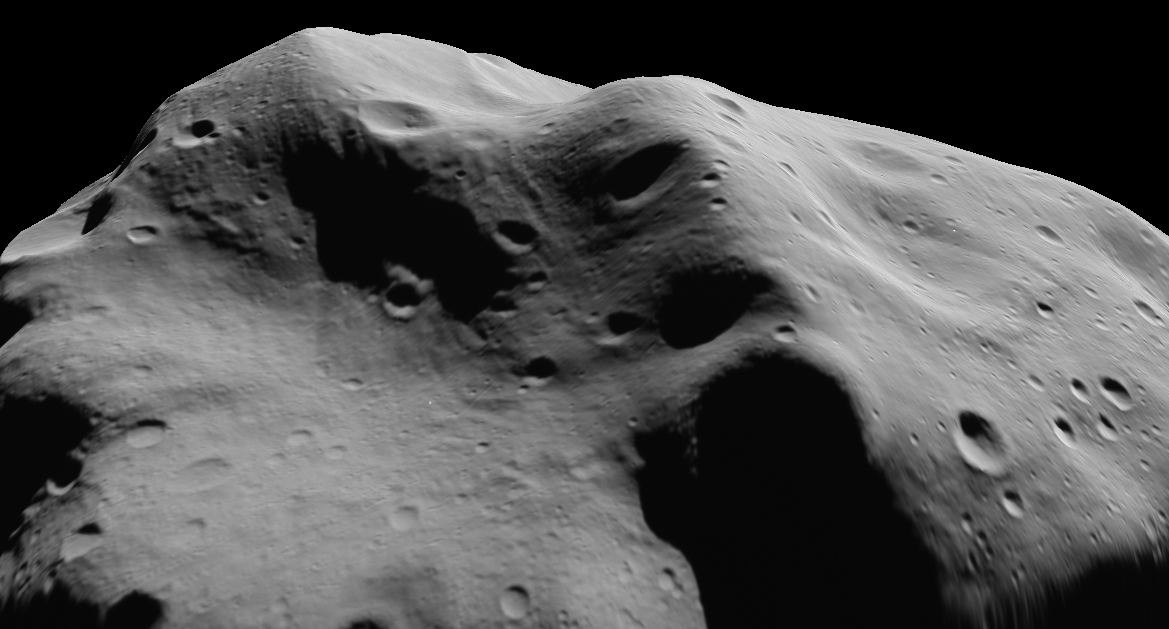Host: Fraser Cain (@fcain)
Guests:
Morgan Rehnberg (cosmicchatter.org / @cosmic_chatter)
Ramin Skibba (@raminskibba)
Brian Koberlein (@briankoberlein)
Continue reading “Weekly Space Hangout – Oct. 10, 2014: Major Telescopes and Moon Water”

Space and astronomy news
Host: Fraser Cain (@fcain)
Guests:
Morgan Rehnberg (cosmicchatter.org / @cosmic_chatter)
Ramin Skibba (@raminskibba)
Brian Koberlein (@briankoberlein)
Continue reading “Weekly Space Hangout – Oct. 10, 2014: Major Telescopes and Moon Water”
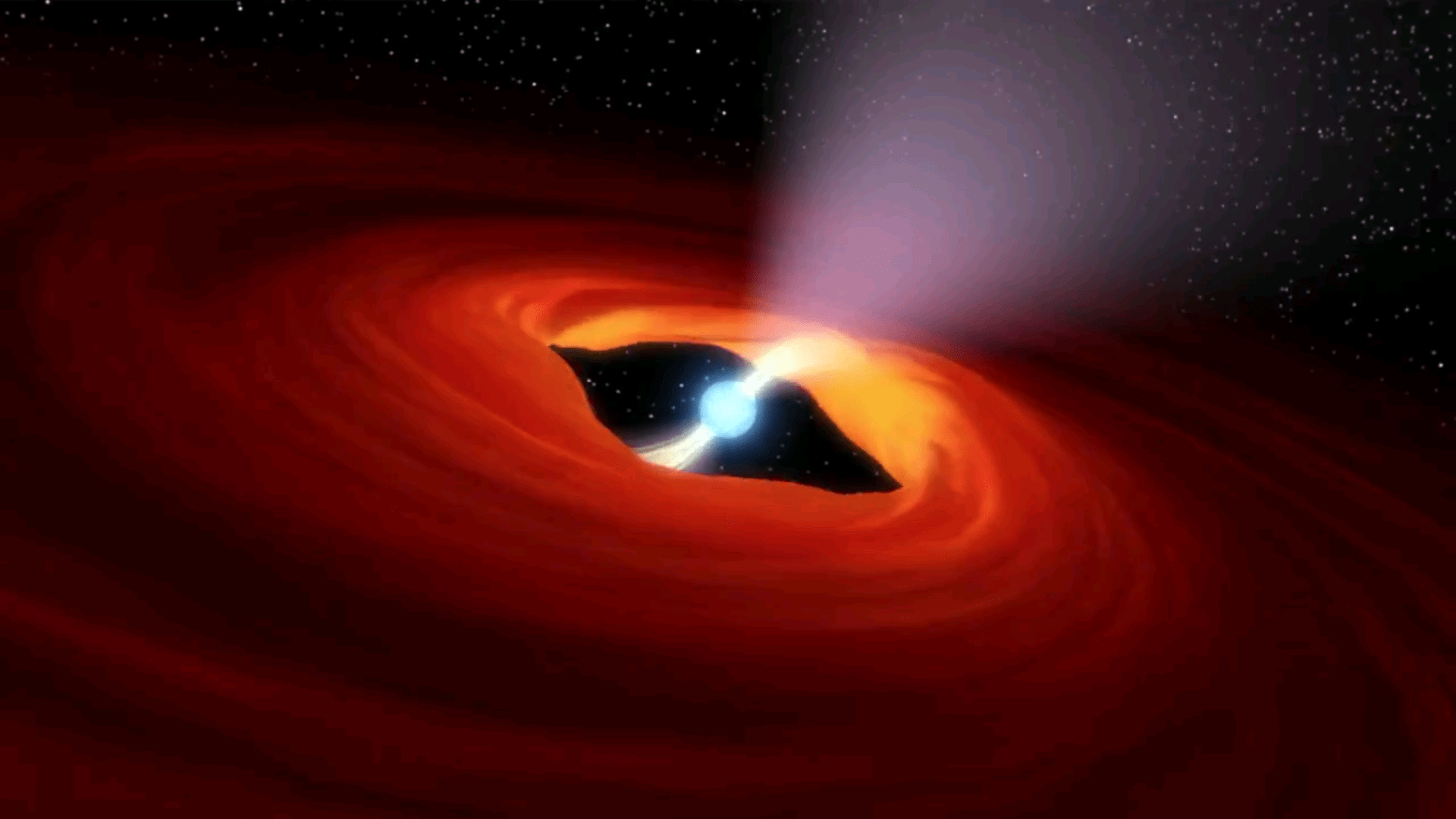
A research team led by Caltech astronomers of Pasadena California have discovered an ultraluminous X-ray (ULX) source that is pulsating. Their analysis concluded that the source in a nearby galaxy – M82 – is from a rotating neutron star, a pulsar. This is the first ULX source attributed to a pulsar.
Matteo Bachetti of the Université de Toulouse in France first identified the pulsating source and is the lead author of the paper, “An ultraluminous X-ray source powered by an accreting neutron star” in the journal Nature. Caltech astronomer Dr. Fiona Harrison, the team leader, stated “This compact little stellar remnant is a real powerhouse. We’ve never seen anything quite like it. We all thought an object with that much energy had to be a black hole.”
What is most extraordinary is that this discovery places even more strain on theories already hard pressed to explain the existence of ultraluminous X-Ray sources. The burden falls on the shoulder of the theorists.
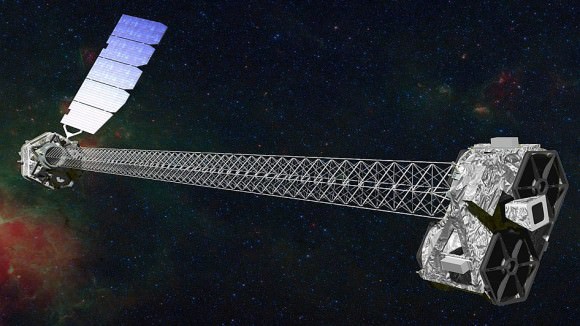
The source of the observations is the NuSTAR space telescope, a SMEX class NASA mission. It is a Wolter telescope that uses grazing incidence optics, not glass (refraction) or mirrors (reflection) as in visible light telescopes. The incidence angle of the X-rays must be very shallow and consequently the optics are extended out on a 10 meter (33 feet) truss. NuSTAR records its observations with a time stamp such as taking a video of the sky. The video recording in high speed is not in visible everyday light but what is called hard x-rays. Only gamma rays are more energetic. X-rays emanate from the most powerful sources and events in the Universe. NuStar observes in the energy range of X-Rays from 5 to 80 KeV (electron volt)while the famous Chandra space telescope observes in the .1 to 10 KeV range. Chandra is one NASA’s great space telescope, was launched by the Space Shuttle Columbia (STS-93) in 1999. Chandra has altered our view of the Universe as dramatically as the first telescope constructed by Galileo. NuSTAR carries on the study of X-rays to higher energies and with greater acuity.
ULX sources are rare in the Universe but this is the first pulsating ULX. After analysis, they concluded that this is not a black hole but rather its little brother, a spinning neutron star as the source. More specifically, this is an accreting binary pulsar; matter from a companion star is being gravitationally attracted by and accreting onto the pulsar.
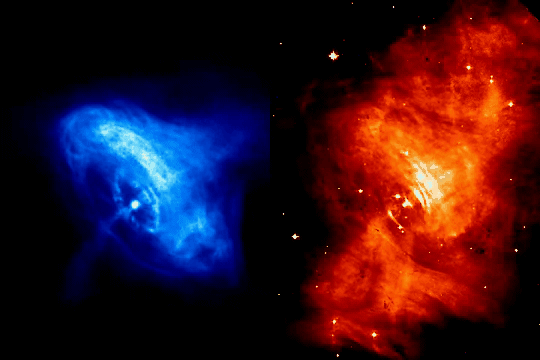
Take a neutron star and spin it up to anywhere from 700 rotations per second to a mere one rotation every 10 seconds. Now you have a neutron star called a pulsar. Spinning or not, these are the remnants of supernovae, stellar explosions that can outshine a galaxy of 300 billion stars. Just one teaspoon of neutron star material weighs 10 million tons (9,071,847,400 kg). That is the same weight as 900 Great Pyramids of Giza all condensed to one teaspoon. As incredible a material and star that a neutron star is, they were not thought to be the source of any ultraluminous X-Ray sources. This view has changed with the analysis of observations by this research team utilizing NuSTAR. The telescope name – NuSTAR – stands for Nuclear Spectroscopic Telescope Array.
There is nothing run of the mill about black holes. Dr. Stephen Hawking only conceded after 25 years, in 2004 (the Thorne-Hawking Bet) that Black Holes exist. And still today it is not absolutely certain. Recall the Universe Today weekly – Space Hangout on September 26 – “Do Black Holes exist?” and the article by Jason Major, “There are no such things as Black Holes.”
Pulsars stars are nearly as exotic as black holes, and all astronomers accept the existence of these spinning neutron stars. There are three final states of a dying star. Stars like our Sun at the end of their life become very dense White Dwarf stars, about the size of the Earth. Neutron stars are the next “degenerate” state of a dying exhausted star. All the electrons have merged with the protons in the material of the star to become neutrons. A neutron star is a degenerate form of matter effectively made up of all neutron particles. Very dense, these stars are really small, the size of cities, about 16 miles in diameter. The third type of star in its final state is the Black Hole.

A spinning neutron star creates a magnetic field, the most powerful of such fields in the Universe. They are like a dipole of a bar magnet and because of how magnetic fields confine the hot gases – plasma – of the neutron star, constant streams of material flow down and light streams out from the magnetic poles.
Recently, the Earth has had incredible northern lights, aurora. These lights are also from hot gases — a plasma — at the top of our atmosphere. Likewise, hot energetic particles from the Sun are funneled down into the magnetic poles of the Earth’s field that creates the northern lights. For spinning neutron stars – pulsars – the extreme light from the magnetic poles are like beacons. Just like our Earth, the magnetic poles and the spin axis poles do not coincide. So the intense beacon of light will rotate around and periodically point at the Earth. The video of the first illustration describes this action.

The light beacons from pulsars are very bright but theory, until now, has been supported by observations. No ultraluminous X-ray sources should be pulsars. The newly discovered pulsar is outputting 100 times more energy than any other. Discoveries like the one by these astronomers utilizing NuSTAR is proof that there remains more to discover and understand and new telescopes will be conceived to help resolve questions raised by NuSTAR or Chandra.
Further reading: JPL
If you’re a fan of SpaceX, you’ll love the website SpaceXStats. Writ large on the site are real-time countdowns to upcoming launches, all sorts of SpaceX statistics, launch manifest info, and fun trivia (there’s a countdown to how many days until Elon Musk’s bet about getting to Mars by 2020 or 2025 expires.)
The owner of the site, Lukas Davia, recently created a fantastic Falcon 9 launch collage, which was originally posted on imgur and discussed on Reddit (where there’s a 16,000-strong SpaceX community).
Lukas told Universe Today that one r/SpaceX user recently inquired if anyone had come across SpaceX montages. “While I don’t have the time for any serious video editing, I did have enough time spare to create a photo montage,” Lukas said via email. “Since I’m the owner of spacexstats.com, I already had all the launch images and assets necessary to produce it, stored locally on my computer. Using Adobe Photoshop, the whole process took just over an hour, from a blank canvas to the final image – and didn’t require much more than layer masks and guides to create. I then submitted it to /r/SpaceX & /r/space on Reddit, where it (quite surprisingly) managed to generate over 1,300,000 views in less than 24 hours.”
He added that he does plan on producing similar SpaceX graphics and perhaps updating this one in the future, “although I fear at SpaceX’s recent launch cadence, it’ll become unsuitably wide at some point!” he said.
Be sure to click on the image above to see the full resolution size.
Thanks to Lukas for sharing his montage with Universe Today.
When you look up and see the Milky Way, you’re gazing into the heart of our home galaxy. What, exactly, are we looking at?
Anyone who’s ever been in truly dark skies has seen the Milky Way. The bright band across the sky is unmistakable. It’s a view of our home galaxy from within.
As you stare out into the skies and see that splash of stars, have you ever wondered, what are you looking at? Which parts are towards the inside of the galaxy and which parts are looking out? Where’s that supermassive black hole you’ve heard so much about?
In order to see the Milky Way at all, you need seriously dark skies, away from the light polluted city. As the skies darken, the Milky Way will appear as a hazy fog across the sky.
Imagine it as this vast disk of stars, with the Sun embedded right in it, about 27,000 light-years from the core. We’re seeing the galaxy edge on, from the inside, and so we see the galactic disk as a band that forms a complete circle around the sky.
Which parts you can see depend on your location on Earth and the time of year, but you can always see some part of the disk.
The galactic core of the Milky Way is located in the constellation Sagittarius, which is located to the South of me in Canada, and only really visible during the Summer. In really faint skies, the Milky Way is clearly thicker and brighter in that region.
Want to know the exact point of the galactic core? It’s right… there.
During the Winter, we’re looking away from the galactic core to the outer regions of the galaxy. It still has the same band of stars, but it’s thinner and without the darker clouds of dust that obscure our view to the galactic core.
How do astronomers even know that we’re in a spiral galaxy anyway?
There are two major types of galaxies, spiral galaxies and elliptical galaxies.
Elliptical galaxies are made up of so many galactic collisions, they’re nothing more than vast balls of trillions of stars, with no structure. Because we can see a distinct band in the sky, we know we’re in some kind of spiral.

Astronomers map the arms by looking at the distribution of gas, which pulls together in star forming spiral arms. They can tell how far the major arms are from the Sun and in which direction.
The trick is that half the Milky Way is obscured by gas and dust. So we don’t really know what structures are on the other side of the galactic disk. With more powerful infrared telescopes, we’ll eventually be able to see though the gas and dust and map out all the spiral arms.
If you’ve never seen the Milky Way with your own eyes, you need to. Get far enough away from city lights to truly see the galaxy you live in.
The best resource is “The Dark Sky Finder”, we’ll put a link in the show notes.
Have you ever seen the Milky Way? If not, why not? Let’s hear a story of a time you finally saw it.
And if you like what you see, come check out our Patreon page and find out how you can get these videos early while helping us bring you more great content!

Miranda, the innermost of Uranus’ five moons, has a “Frankenstein”-like appearance: it looks as though it was pieced together from parts that didn’t quite fit together properly. Plus, it has incredibly diverse surface features including canyons up to 12 times deeper than Earth’s Grand Canyon, impact craters, cliffs, and parallel grooves called sulci.
Over the years, various hypotheses have been presented in an attempt to account for Miranda’s enigmatic appearance. First thought to be the result of a catastrophic impact, disintegration, and subsequent reassembly, scientists now believe that some of Miranda’s features might have been influenced by Uranus itself, and are the result of convection: thermally-induced resurfacing from tidal forces from the planet.
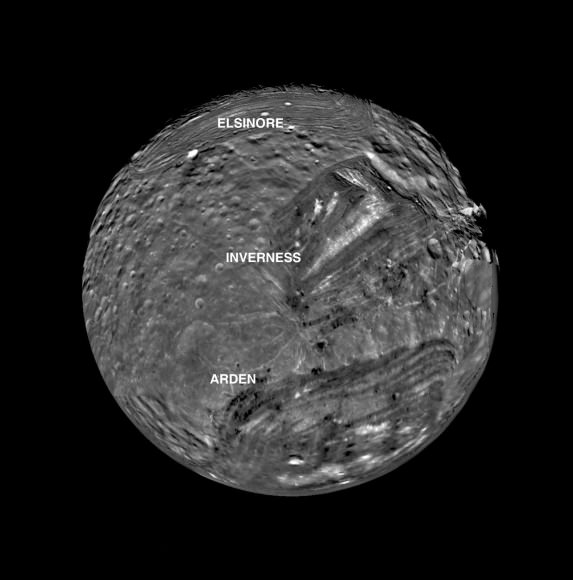
Miranda was discovered in 1948 by Gerard Kuiper. Although it is only 293 miles (471 kilometers) in diameter (approximately one-seventh that of Earth’s moon,) it has one of the strangest and most varied landscapes in our Solar System.
Central to the new research was analysis of three very large, geometric shaped features known as coronae, which are only found on one other planetary body. Coronae were first identified on Venus in 1983 by Venera 15/16 radar imaging equipment.
A leading theory about their formation has been that they form when warm, sub-surface fluids rise to the surface and form a dome. As the edges of the dome cool, the center collapses and warm fluid leak out its sides, forming a crown-like structure, or corona. Based on this premise, the question is then raised as to what mechanism/processes in Miranda’s past warmed its interior sufficiently to produce warm, sub-surface fluids that resulted in coronae formation. Scientists believe that tidal warming played an important role in the formation of the coronae, but the process by which this internal heating led to these features has remained unclear.
Extensive 3D computer simulations conducted by Brown University’s Noah P. Hammond and Amy C. Barr have produced results that are consistent with the three coronae seen on Miranda. In their paper titled, “Global Resurfacing of Uranus’s Moon Miranda by Convection,” Hammond and Barr summarize their results as follows:
“We find that convection in Miranda’s ice shell powered by tidal heating can generate the global distribution of coronae, the concentric orientation of sub-parallel ridges and troughs, and the thermal gradient implied by flexure. Models that account for the possible distribution of tidal heat ing can even match the precise locations of the coronae, after a reorientation of 60°.”
Using Saturn’s moon Enceladus as a baseline due to its similarity in size, composition, and orbital frequency to Miranda, original calculations estimate that as much as 5 GW of tidal dissipation power could be generated. Hammond and Barr’s simulation results indicate almost twice that amount of power would have been created:
“Simulations that match the thermal gradient from flexure have total power outputs of close to 10 GW , somewhat larger than the total power we predict could be generated during orbital resonance.”
Results from Hammond and Barr’s simulations provide a preliminary set of answers that strive to unlock the mysteries of Miranda’s bizarre appearance. Future simulations and studies into the complex nature of tidal heating will build upon these results to provide further insight into the enigmatic moon we call Miranda.
“Global Resurfacing of Uranus’s Moon Miranda by Convection,” was published online on 15 September 2014 in GEOLOGY, a journal of The Geological Society of America. You can read the abstract here.
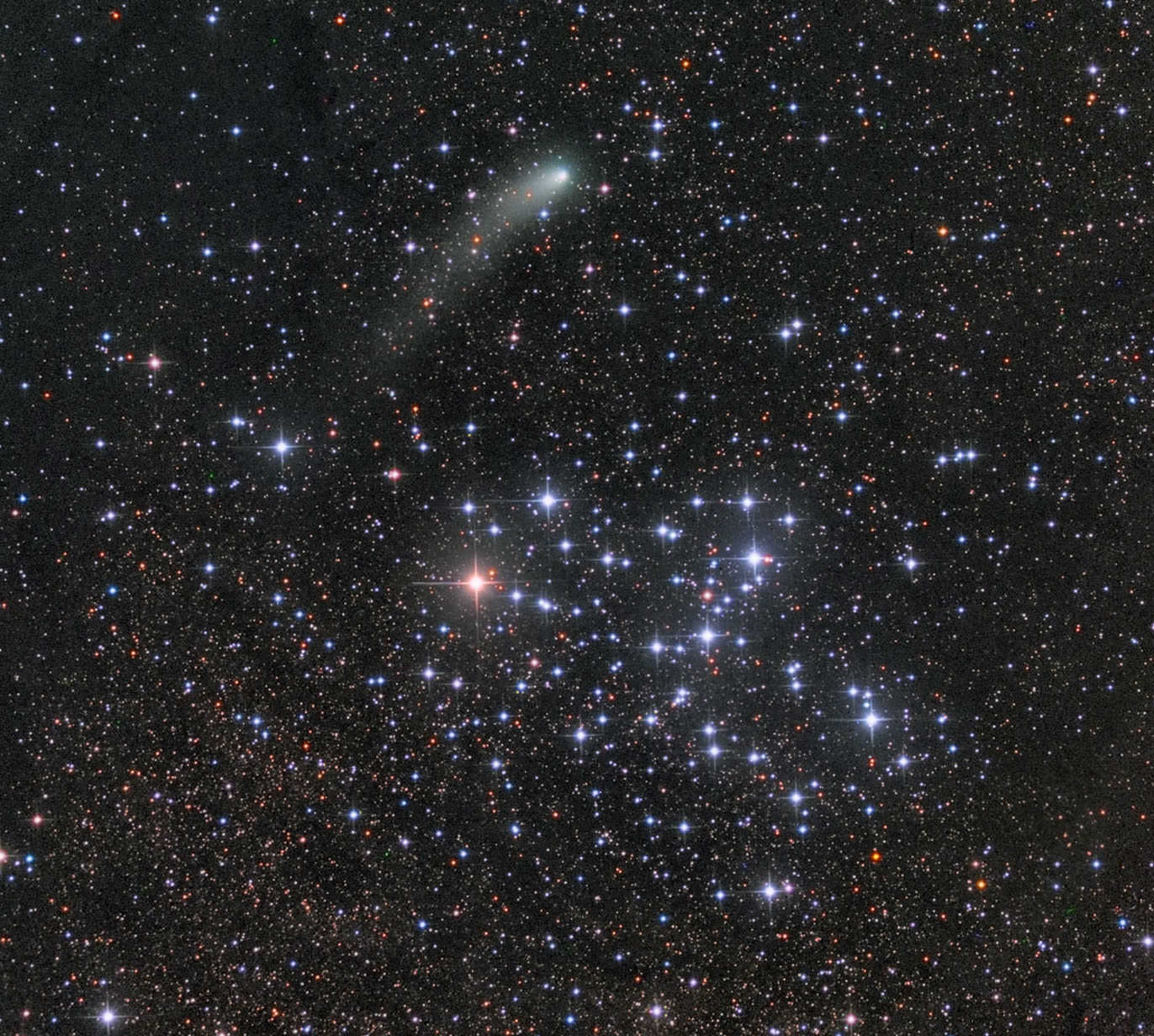
With excitement building as Comet Siding Spring rapidly approaches the Red Planet, we’ll soon have the opportunity to spot it through our own telescopes. Dark skies return this week with the moon now past full and rising later each night. Until recently, the comet could only be seen by skywatchers living in southern latitudes. Now it’s popped high enough above the southern horizon to see from mid-northern latitudes, albeit low in the sky. Observers with 8-inch (20 cm) or larger telescopes can follow the comet as it travels from Scorpius north to Ophiuchus and its encounter with Mars on October 19.
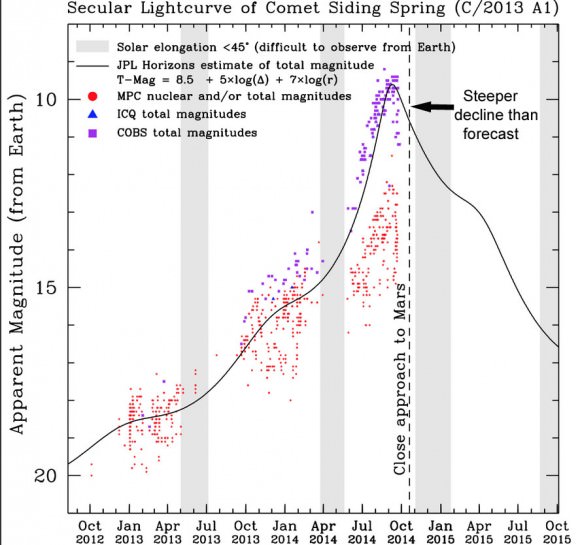
Until late September, the comet had been brightening as forecast based on the simple principle that the closer an object is to Earth the brighter it appears in the sky. Siding Spring came just shy of 1 A.U. of Earth in early September and has since been slip-sliding away. All through the first weeks of September it glowed at magnitude +9-10 and could be spotted in small telescopes trekking across the south polar constellations. Now on the cusp of its big moment with Mars, Siding Spring has been fading faster than expected.
It could be running low on exposed ice or concluding a long, slow outburst. Maybe it’s as simple as our changing perspective on the comet’s tail – we see it from the side now instead of looking down the tail where reflective dust piles up along our line of sight. No one knows exactly why, but given that comets are famous for their unpredictability due to their fragile nature and the varying rates at which they sputter away ice and dust, we shouldn’t be too surprised.
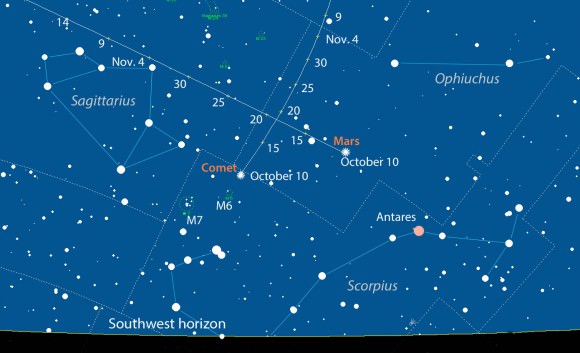
So what does that mean for observers? The most recent observations put the comet at about magnitude +11 with a loosely condensed coma and diameter of about one arc minute or a little larger than Jupiter appears in a telescope. It’s a small, relatively faint object now but should be visible in 8-inch and larger telescopes from a dark sky assuming it doesn’t “drop off the deep end” and fade even faster. With Mars nearby, finding the general location of Siding Spring is easy. The maps will help you pinpoint it.

The good news is that the comet is heading straight north and getting higher in the sky every night. The bad news is that it’s also dropping westward each evening mostly negating its northerly altitude gains. Those in the southern U.S. will have the best viewing window with Siding Spring 20º high at nightfall (14º in the central states and 6º in the north). To ensure success, find a spot with a wide open view as far down to the southwestern horizon as possible. You’ll make best use of your time and see the comet highest if you set up during evening twilight and begin searching as soon as the sky is dark. Given that Mars is 1st magnitude and the comet has faded more than expected, it may be difficult to see against the planet’s glare on the 19th. Not that I want to dissuade you from trying, but the nights leading up to and after the encounter will prove better for comet spotting.

The fluffball passed the glittery Butterfly Cluster (M6) in Scorpius on October 9 displaying an attractive curved tail pointing southeast. Tim Reyes of Universe Today calculated the current tail length at ~621,000 miles (1 million km) with a coma ~19,900 miles across (32,000 km). Closest approach occurs around 1:28 p.m. Central Daylight Time (18:28 UT) October 19 when the comet will miss Mars by only 88,000 miles (141,600 km). Dust particles leaving the coma will rip by the planet at ~125,000 mph (56 km/sec). Will they pass close enough to set the Martian sky a-sparkle with meteors?
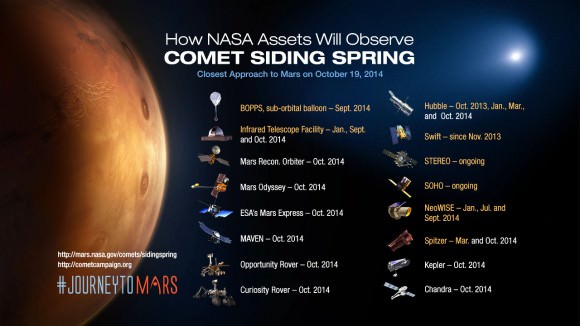
According to a recent NASA press release, the period of greatest risk to orbiting spacecraft will start about 90 minutes after the closest approach of the comet’s nucleus and will last about 20 minutes, when Mars will come closest to the center of the widening trail of dust flying from the comet’s nucleus. Since the comet will barely graze the planet, dust impacts on orbiting spacecraft may or may not happen.
Back on Earth we can watch the daredevil pass by telescope or catch it live on the Web here:
* SLOOH: broadcast begins Sunday Oct. 19 at 9:51 a.m. CDT (14:51 UT)
* Gianluca Masi’s Virtual Telescope: streaming begins Sunday, Oct. 19 at 11:45 a.m. CDT (16:45 UT)
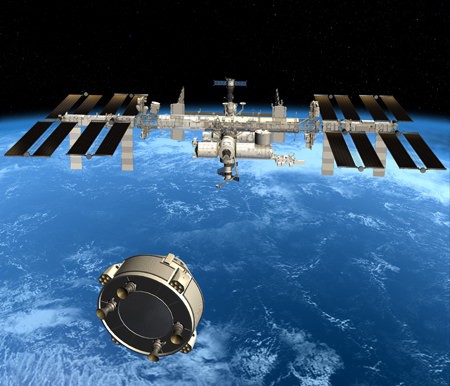
Declaring that the future survival of the International Space Station (ISS) was “jeopardized,” NASA issued a statement late Thursday, Oct. 9, ordering Boeing and SpaceX to restart work to develop commercial crew vehicles under the Commercial Crew Transportation Capability (CCtCap) contracts awarded to each firm on Sept. 16.
NASA took this action despite a protest filed with the U.S. Government Accountability Office (GAO) by the losing commercial crew bidder, Sierra Nevada Corporation.
On Sept. 26, NASA had directed Boeing and SpaceX to “suspend performance of the contracts” in response to the GAO protest filed by Sierra Nevada Corporation.
NASA told Boeing and SpaceX to immediately resume work on their astronaut space taxis under “statutory authority available to NASA.”
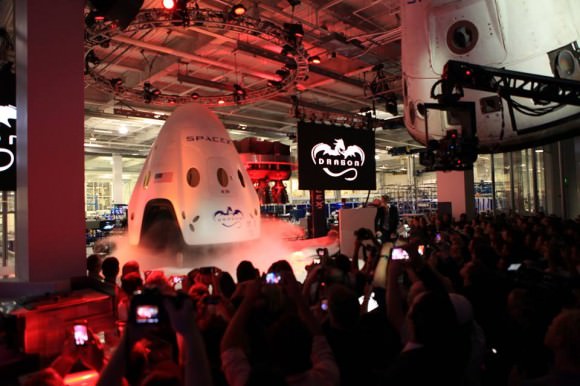
It’s been a wild twist of events ever since NASA Administrator Charles Bolden announced that Boeing and SpaceX had won the high stakes and history making NASA competition to build the first ever private ‘space taxis’ to launch American astronauts to the ISS and restore America’s capability to launch our crews from American soil for the first time since 2011.
Bolden personally made the historic announcement of NASA’s commercial crew contract winners to build America’s next human rated spaceships at the Kennedy Space Center (KSC) on Wednesday, Sept. 16 at a briefing I attended at the press site.
Barely ten days later NASA told Boeing and SpaceX to stop work while the GAO reviews the SNC protest by a Jan 5, 2015, deadline.
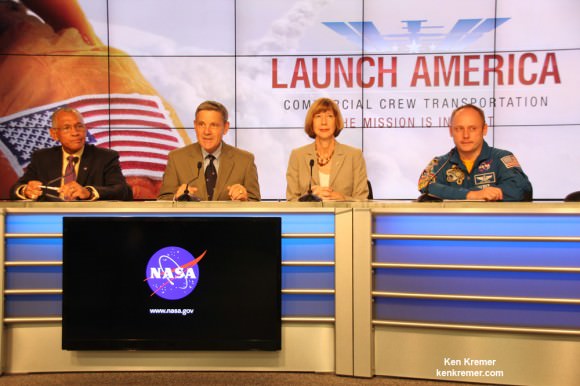
In the meantime, NASA decided that the delay in the commercial crew effort was untenable and posed risks to the ISS, crew operations and U.S. commitments under international agreements.
Therefore NASA exercised its statutory authority to “avoid significant adverse consequences.”
Here is the full text of the NASA’s Oct. 9 statement:
“On Oct. 9, under statutory authority available to it, NASA has decided to proceed with the Commercial Crew Transportation Capability (CCtCap) contracts awarded to The Boeing Company and Space Exploration Technologies Corp. notwithstanding the bid protest filed at the U.S. Government Accountability Office by Sierra Nevada Corporation. The agency recognizes that failure to provide the CCtCap transportation service as soon as possible poses risks to the International Space Station (ISS) crew, jeopardizes continued operation of the ISS, would delay meeting critical crew size requirements, and may result in the U.S. failing to perform the commitments it made in its international agreements. These considerations compelled NASA to use its statutory authority to avoid significant adverse consequences where contract performance remained suspended. NASA has determined that it best serves the United States to continue performance of the CCtCap contracts that will enable safe and reliable travel to and from the ISS from the United States on American spacecraft and end the nation’s sole reliance on Russia for such transportation.”
The ‘space taxi’ contracts to build the Boeing CST-100 and SpaceX Dragon V2 spaceships are worth a total of $6.8 Billion, with the goal to end the nation’s sole source reliance on Russia in 2017.
Boeing was awarded the larger share of the contract valued at $4.2 Billion while SpaceX was awarded a lesser amount valued at $2.6 Billion.
Both spaceships are capsule design with parachute assisted landings. The third competitor involving Sierra Nevada’s Dream Chaser mini-shuttle offering runway landings was not selected for further development.
“From day one, the Obama Administration made clear that the greatest nation on Earth should not be dependent on other nations to get into space,” Bolden told reporters at the agency’s Kennedy Space Center in Florida, on Sept 16.
“Thanks to the leadership of President Obama, the hard work of our NASA and industry teams, and support from Congress, today we are one step closer to launching our astronauts from U.S. soil on American spacecraft and ending the nation’s sole reliance on Russia by 2017. Turning over low-Earth orbit transportation to private industry will also allow NASA to focus on an even more ambitious mission – sending humans to Mars.”
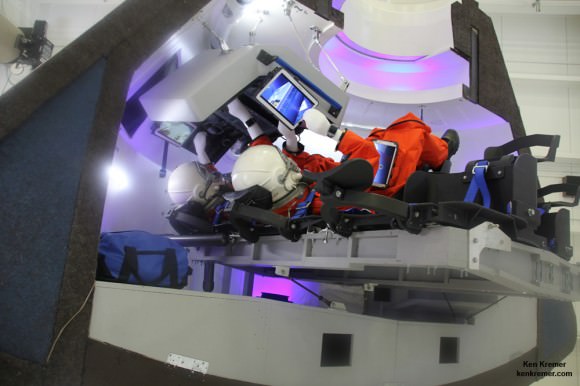
Both the Boeing CST 100 and SpaceX Dragon V2 will launch from the Florida Space Coast, home to all US astronaut flights since the dawn of the space age.
The Boeing CST-100 will launch atop a man rated United Launch Alliance Atlas V rocket from Space Launch Complex 41 on Cape Canaveral Air Force Station, FL.
The SpaceX Dragon will launch atop a man rated Falcon 9 v1.1 rocket from neighboring Space Launch Complex 40 at the Cape.
Stay tuned here for Ken’s continuing Orion and Earth and planetary science and human spaceflight news.
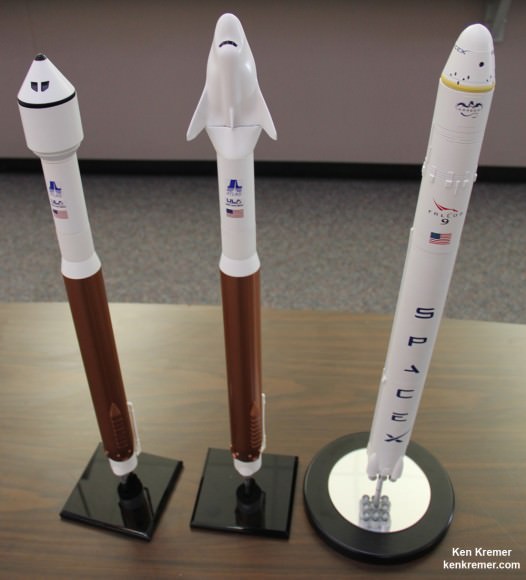
…………….
Learn more about Commercial Space Taxis, Orion and NASA Human and Robotic Spaceflight at Ken’s upcoming presentations
Oct 14: “What’s the Future of America’s Human Spaceflight Program with Orion and Commercial Astronaut Taxis” & “Antares/Cygnus ISS Rocket Launches from Virginia”; Princeton University, Amateur Astronomers Assoc of Princeton (AAAP), Princeton, NJ, 7:30 PM
Oct 23/24: “Antares/Cygnus ISS Rocket Launch from Virginia”; Rodeway Inn, Chincoteague, VA
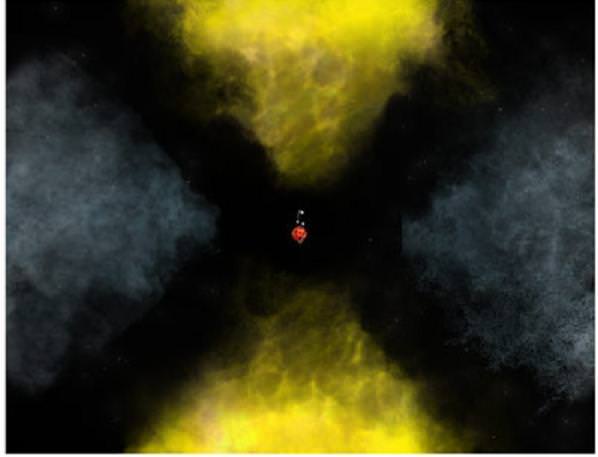
Over two years ago, the Fermi-LAT Collaboration observed an “ear and eye opening” event – the exact location where a stellar explosion called a nova emitted one of the most energentic forms of electromagnetic waves… gamma rays. When it was first detected in 2012, it was something of a mystery, but the findings could very well point to what may cause gamma ray emissions.
“We not only found where the gamma rays came from, but also got a look at a previously-unseen scenario that may be common in other nova explosions,” said Laura Chomiuk, of Michigan State University.
A nova? According to the Fermi researchers, a classical nova results from runaway thermonuclear explosions on the surface of a white dwarf that accretes matter from a low-mass main-sequence stellar companion. As it gathers in material, the thermonuclear event expels debris into surrounding space. However, astronomers didn’t expect this “normal” event to produce high energy gamma rays!
Explains the Fermi-LAT team: “The gamma-ray detections point to unexpected high-energy particle acceleration processes linked to the mass ejection from thermonuclear explosions in an unanticipated class of Galactic gamma-ray sources.”
While NASA’s Fermi spacecraft was busy watching a nova called V959 Mon, some 6500 light-years from Earth, other radio telescopes were also busy picking up on the gamma ray incidences. The Karl G. Jansky Very Large Array (VLA) was documenting radio waves coming from the nova. The source of these emissions could be subatomic particles moving at nearly the speed of light interacting with magnetic fields – a condition needed to help produce gamma rays. These findings were backed up by the extremely-sharp radio “vision” of the Very Long Baseline Array (VLBA) and the European VLBI network. They revealed two knots in the radio observations – knots which were moving away from each other. Additional studies were done with e-MERLIN in the UK, and another round of VLA observations in 2014. Now astronomers could begin to piece together the puzzle of how radio knots and gamma rays are produced.
According to the NRAO news release, the white dwarf and its companion give up some of their orbital energy to boost some of the explosion material, making the ejected material move outward faster in the plane of their orbit. Later, the white dwarf blows off a faster wind of particles moving mostly outward along the poles of the orbital plane. When the faster-moving polar flow hits the slower-moving material, the shock accelerates particles to the speeds needed to produce the gamma rays, and the knots of radio emission.
“By watching this system over time and seeing how the pattern of radio emission changed, then tracing the movements of the knots, we saw the exact behavior expected from this scenario,” Chomiuk said.

But the V959 Mon observations weren’t the end of the story. According to Fermi-LAT records, in 2012 and 2013, three novae were detected in gamma rays and stood in contrast to the first gamma-ray detected nova V407 Cygni 2010, which belongs to a rare class of symbiotic binary systems. Despite likely differences in the compositions and masses of their white dwarf progenitors, the three classical novae are similarly characterized as soft spectrum transient gamma-ray sources detected over 2-3 week durations.
“This mechanism may be common to such systems. The reason the gamma rays were first seen in V959 Mon is because it’s close,” Chomiuk said. Because the type of ejection seen in V959 Mon also is seen in other binary-star systems, the new insights may help astronomers understand how those systems develop. This “common envelope” phase occurs in all close binary stars, and is poorly understood. “We may be able to use novae as a ‘testbed’ for improving our understanding of this critical stage of binary evolution,” explains Chomiuk.
Original Story Source: Radio Telescopes Unravel Mystery of Nova Gamma Rays from National Radio Astronomy Observatory. Chomiuk worked with an international team of astronomers. The researchers reported their findings in the scientific journal “Nature”.

NASA is getting ready for the first test flight of the Orion crew vehicle, currently scheduled for December 4, 2014. “Before we can send astronauts into space on Orion, we have to test all of its systems,” says NASA engineer Kelly Smith in this new video released by NASA. “And there’s only one way to know if we got it right: fly it in space.”
Of course for Orion’s first test fight, no astronauts will be aboard. The spacecraft will be loaded with sensors to record and measure all aspects of the flight in detail. Orion is now in the final stages of preparation for the uncrewed flight that will take it 5,800 km (3,600 miles) above Earth on a 4.5-hour mission to test many of the systems necessary for future human missions into deep space.
Already the Delta IV Heavy rocket that will launch the test flight has been rolled to the launch pad, and the Orion capsule will be transported to the pad around November 10 or 11.
After launch, the spacecraft will make two orbits and then reenter Earth’s atmosphere at almost 32,000 km/hr (20,000 miles per hour), and reach temperatures near 2,200 degrees Celsius (4,000 degrees Fahrenheit), before its parachute system deploys to slow the spacecraft for a splashdown in the Pacific Ocean.
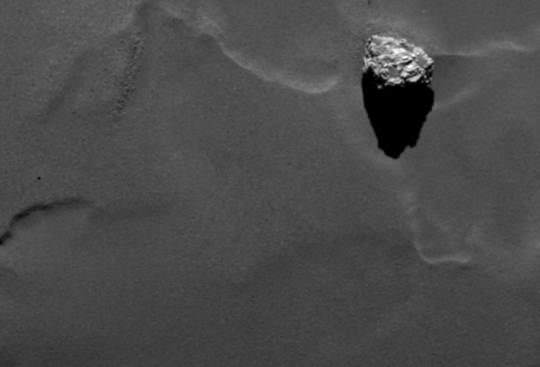
As the Rosetta spacecraft drops a bit closer to its target comet, some really cool features are popping into view. For example, look at this picture of a 150-foot (45-meter) rock on Comet 67P/Churyumov-Gerasimenko, which was taken in September and released today (Oct. 9). And it’s led to the decision to have an Egyptian theme to naming features on the comet.
“It stands out among a group of boulders in the smooth region located on the lower side of 67P/C-G’s larger lobe,” ESA stated in a release. “This cluster of boulders reminded scientists of the famous pyramids at Giza near Cairo in Egypt, and thus it has been named Cheops for the largest of those pyramids, the Great Pyramid, which was built as a tomb for the pharaoh Cheops (also known as Kheops or Khufu) around 2550 BC.”
Scientists are still trying to figure out what the boulders are made of, and how they are formed, as the spacecraft moves into a “close observation phase” tomorrow (Oct. 10) where it is only 10 kilometers (6.2 miles) from the surface.
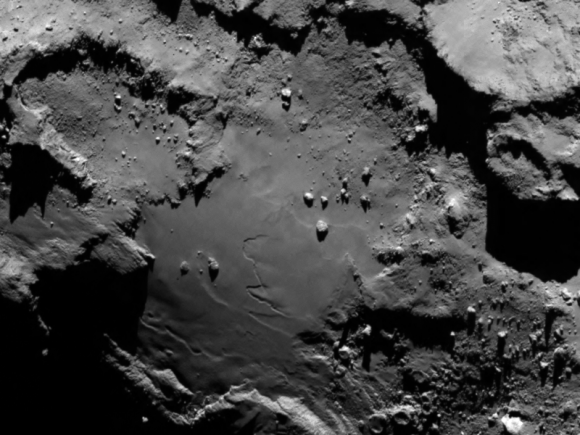
Meanwhile, some new results are coming from an asteroid that the spacecraft whizzed by a couple of years ago. In the picture below, you can see evidence of a crater that Rosetta didn’t even see!
The grooves you see there on Lutetia (which Rosetta imaged in 2010) hint at shock waves from various craters, including one that was likely on the hidden side of the asteroid relative to Rosetta as it flew by. The suspected crater is called “Suspicio.” While craters have been found in other asteroids visited by spacecraft, grooves are rarer.
“The way in which grooves are formed on these bodies is still widely debated, but it likely involves impacts,” ESA stated. “Shock waves from the impact travel through the interior of a small, porous body and fracture the surface to form the grooves.”
A paper on the research will be published in Planetary and Space Science this month, led by Sebastien Besse, a research fellow at ESA’s Technical Centre. For more information, check out this release from ESA.
